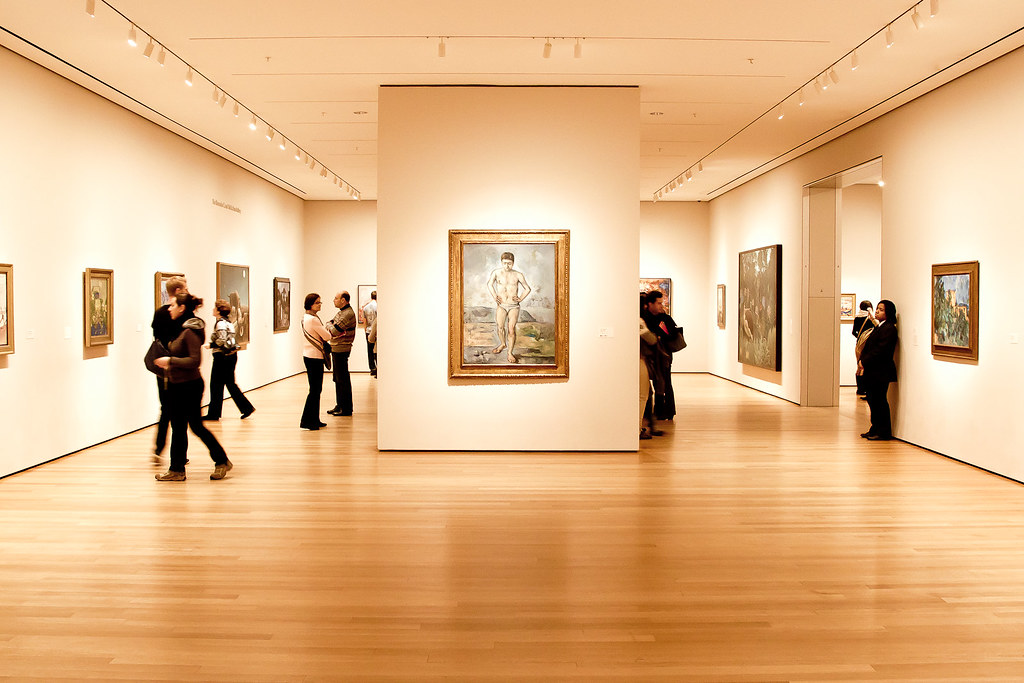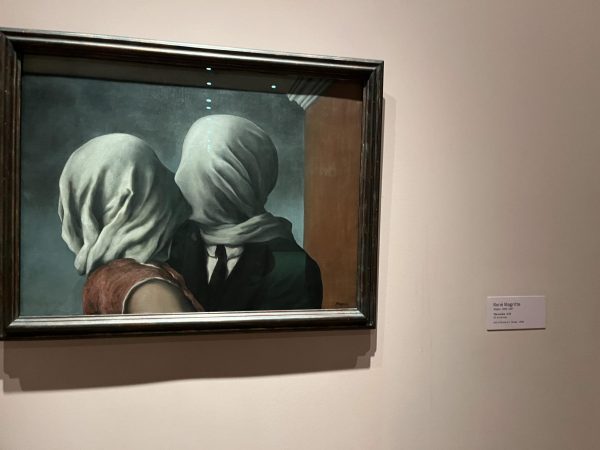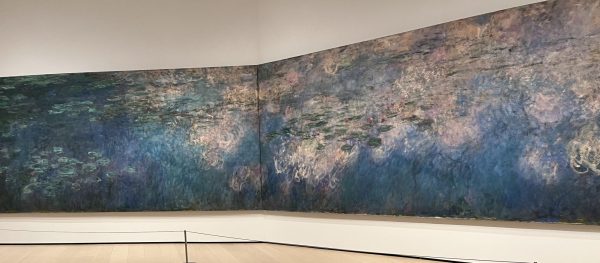As a big museum enthusiast and having grown up less than an hour from New York City, the Museum of Modern Art is one of my favorite places to visit. During my MoMA visit this winter break, I experienced a plethora of emotions. Feeling both inspired and bemused, modern art tends to stir up a lot of questions for me: can anything be a work of art? How does an artist come up with their vision? How does art express both the hope and despair in humanity? I also revisited some of my favorite pieces to see how my view of them has changed as my awareness of art grows. During the fall semester, I took “Art of Protest,” a class taught by Professor Rothman from the Art History Department, which focused on the relationship between modern art and social justice. The class also emphasized the importance of asking questions like: “What does this piece of art do?” or “How does it make me feel?” instead of “What does this piece of art mean?” and “What does it mean to be avant-garde?” With these questions in mind, I wanted to share my reflections on a couple pieces of art from MoMA.
- “The Lovers” by René Magritte
“The Lovers” is an oil painting that depicts two individuals in a kiss, but a white cloth veils them. Neither one of the subjects can see each other and the viewer of the painting cannot see either of the subjects’ faces. Immediately, I started thinking about the many different interpretations that one could take away from this piece. One great thing about art is that it isn’t concrete in its meaning and, as a viewer, we are given agency to what we perceive, interpret and take away from the piece. I interpreted it partly as a commentary on society and our modern views on love: how can one truly love someone if they can’t see the person? For many, to be loved means being fully seen and acknowledged by the other person. On the other hand, this piece also made me think about how love is blind to the physical traits that we, as a society, often fixate on when it comes to love. It may even be that in order to love someone, one must be blind and see beyond the physical traits. Or, it could merely be two people kissing with a cloth wrapped around their heads;—it is up to interpretation! As you view “The Lovers”,I invite you to ponder the question with me: what does it truly mean to be loved?
2. “Water Lilies” by Claude Monet
Monet’s “Water Lilies” is a series of large mural-sized canvas paintings that are all presented in the same room at the MoMA. As a result, the room feels immersive, with the white walls covered with thick brushstrokes, hues of greens and blues on one side and a pastel palette of those colors on the other. When I think about Monet and paintings like “Water Lilies”, I often think about impressionism, and the idea of the avant-garde. As art historian, Jonathan Fineberg, defines it, avant-garde modern art attempts to “revolutionize mainstream values.” The idea of the avant-garde can certainly be applied to how audiences viewed impressionism as a disgrace for its supposedly sloppy and unfinished nature while they esteemed realist art for its ability to imitate life prior to. the invention of photography. As a result, impressionism was based on capturing the moment, focusing heavily on subjects in nature and movement. With Monet pioneering such a movement, leading to post-impressionism and pointillism, he forever changed the landscape of modern art. It inspires me to know that to view certain pieces of art is to see history firsthand.
While there’s so much I don’t know about art, I hope to encourage anyone who feels hesitant to interact with art. Art truly is for anyone.
After all, as Israeli Sculptor Yaacov Agam once said: “There are two distinct languages. There is the verbal, which separates people… and there is the visual that is understood by everybody.”






















